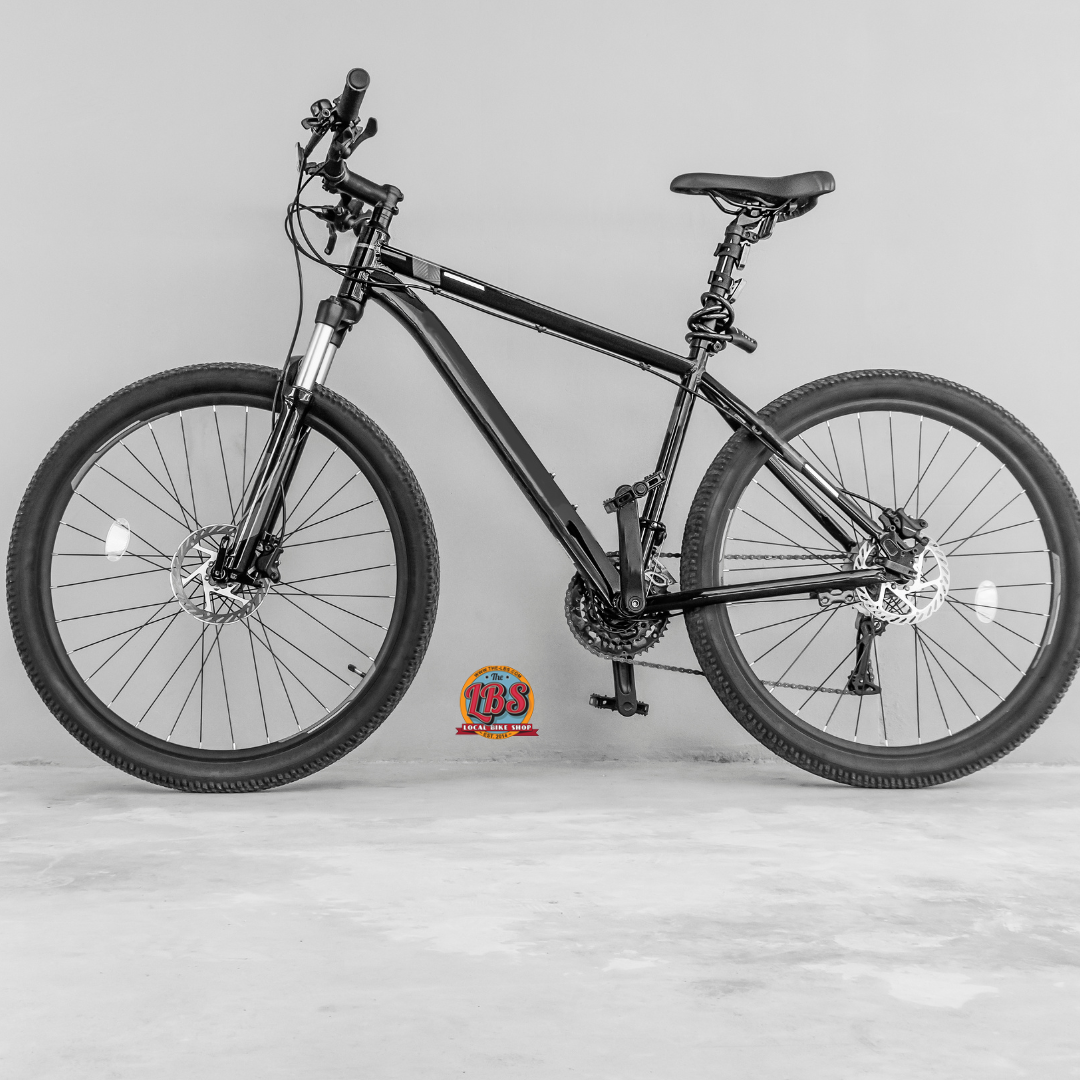Mountain biking is a thrilling and adventurous form of cycling that has gained immense popularity in recent years. Unlike road cycling, which takes place on smooth and paved roads, mountain biking involves off-road cycling on rugged terrain, making it a challenging and exciting experience for riders.
In this blog, we’ll take a closer look at what makes mountain biking unique and why you should give it a try.
Firstly, let’s talk about mountain bike frames. Mountain bikes are specially designed to handle the rigors of off-road cycling. They have robust frames that can withstand the bumps and shocks of uneven terrain.
Unlike road bikes, which have narrow tires, mountain bikes have wider tires with deep treads to provide better traction on loose surfaces such as dirt, gravel, and mud. This design allows mountain bikers to tackle steep inclines and descend rocky descents with ease.
What makes mountain biking unique is the sheer thrill and excitement of riding off-road. Whether you’re a seasoned cyclist or a beginner, mountain biking offers a sense of adventure and exploration that is hard to find in other forms of cycling.
Riding through dense forests, navigating technical trails, and conquering challenging obstacles can be incredibly satisfying and rewarding. Moreover, mountain biking can be a great way to explore new places and enjoy the beauty of nature.
Another benefit of mountain biking is the physical and mental challenge it provides. Riding on rugged terrain requires strength, endurance, and skill, making it an excellent way to stay fit and healthy.
In fact, mountain biking is a highly effective form of cardiovascular exercise that can help you burn calories, build muscle, and improve your overall fitness levels. Additionally, the mental focus required to navigate technical trails and conquer obstacles can help reduce stress and improve mental clarity.
But mountain biking isn’t just about personal satisfaction and health benefits. It’s also a sport that has a positive impact on the environment and local communities. By riding off-road, you can explore natural areas and appreciate their beauty, while also raising awareness about the importance of conservation and preserving our natural resources.
Moreover, mountain biking can bring economic benefits to local communities by promoting tourism and supporting small businesses.
From the thrill of off-road cycling to the physical and mental challenge it provides, mountain biking is an excellent way to stay fit, explore new places, and connect with nature. So why not give it a try? Find a local trail, rent a mountain bike, and experience the thrill and adventure of mountain biking for yourself!
Types of Mountain Bike Frames and Their Differences
This thrilling sport requires the right equipment, including a sturdy and reliable mountain bike frame. A bike frame serves as the backbone of a bike, providing stability, durability, and performance.
When it comes to mountain biking, there are several types of frames to choose from, each designed for a specific type of riding. In this blog, we’ll take a closer look at the different types of mountain bike frames and their differences.
All-Mountain Frame:
All-mountain frames are designed for riders who want to tackle a variety of terrains and trails. These frames are typically lightweight and feature full suspension to provide a comfortable ride on rough terrain.
They’re also designed to be agile and maneuverable, making them a popular choice for riders who enjoy technical descents and steep climbs. One example of an all-mountain frame is the Santa Cruz Hightower, which is designed to handle everything from cross-country trails to technical descents.
Downhill Frame:
Downhill frames are designed for riders who want to tackle the most challenging and technical descents. These frames are built to withstand high speeds and heavy impacts and feature full suspension to provide maximum control and stability.
They’re also designed to be highly durable, with reinforced frames and strong components. One example of a downhill frame is the Pivot Phoenix, which is designed for extreme downhill riding and features a carbon fiber frame for maximum strength and stiffness.
Cross-Country Frame:
Cross-country frames are designed for riders who want to tackle long-distance trails and races. These frames are typically lightweight and feature minimal suspension to provide a fast and efficient ride.
They’re also designed to be highly responsive and maneuverable, making them a popular choice for riders who want to climb steep inclines and navigate technical terrain. One example of a cross-country frame is the Specialized Epic, which is designed for fast and efficient riding and features a lightweight carbon fiber frame.
It’s important to choose the right type of mountain bike frame based on your riding style and preferences. According to a survey conducted by the International Mountain Bicycling Association, the most popular type of mountain bike frame is the all-mountain frame, followed by the cross-country frame and the downhill frame.
This data shows that riders value versatility and the ability to tackle a variety of terrains and trails.Choosing the right mountain bike frame is essential for a safe and enjoyable riding experience. Whether you prefer technical descents, long-distance trails, or a combination of both, there’s a mountain bike frame that’s designed to meet your needs.
By understanding the differences between all-mountain, downhill, and cross-country frames, you can make an informed decision and choose the right frame for your riding style. So, get out there and hit the trails with confidence, knowing that you have the right frame to handle anything that comes your way.
Essential Mountain Bike Parts and Their Functions
Aside from a durable and reliable mountain bike frame, there are other essential parts that contribute to the performance and safety of a mountain bike. These parts are specifically designed to handle the demands of off-road cycling and provide the rider with control and comfort while riding.
In this blog, we’ll take a closer look at some of the most important mountain bike parts and their functions.
Brakes
Brakes are an essential component of any mountain bike, providing the rider with the ability to slow down and stop when necessary.
There are two main types of brakes: rim brakes and disc brakes. Rim brakes work by pressing rubber pads against the rim of the wheel, while disc brakes use a caliper to clamp down on a rotor attached to the wheel hub.
Disc brakes are generally more powerful and reliable, making them the preferred choice for most mountain bikers.
Suspension Forks
Suspension forks are designed to absorb shocks and vibrations when riding over rough terrain.
They’re typically made up of two stanchions that slide into the lower legs of the fork and are connected by a spring or air shock. Suspension forks come in different sizes and lengths, and their travel (the distance the fork compresses) varies depending on the type of riding.
For example, a cross-country fork may have less travel than a downhill fork, which needs to handle bigger impacts and drops.
Drivetrain Components
Drivetrain components are responsible for transferring power from the rider to the wheels. They include the crankset, chain, cassette, and derailleur. The crankset consists of the chainrings and pedals, while the cassette is a set of gears on the rear wheel hub.
The chain connects the two, and the derailleur moves the chain from one gear to another. The number of gears can vary, with more gears providing a wider range of options for the rider.
Wheelsets
Wheelsets are composed of rims, spokes, and hubs. They’re responsible for supporting the weight of the rider and providing traction and stability on the trail.
Mountain bike wheelsets come in different sizes, including 26-inch, 27.5-inch, and 29-inch, and different widths to accommodate different tire sizes. They also come in different materials, such as aluminum, carbon fiber, or a combination of both.
By understanding the function of each of these essential mountain bike parts, riders can make informed decisions when purchasing or upgrading their bike.
According to a study by the Outdoor Industry Association, mountain bike sales increased by 24% in 2020, with more people taking up the sport due to its socially distanced nature.
With the right equipment, riders can enjoy the thrill of off-road cycling while staying safe and comfortable.
To suffice, brakes, suspension forks, drivetrain components, and wheelsets are all crucial parts of a mountain bike that contribute to its performance and safety.
By investing in high-quality components and maintaining them properly, riders can enjoy a comfortable and exciting ride on any terrain.
So, whether you’re a seasoned pro or a beginner, make sure to equip yourself with the best mountain bike parts for an unforgettable ride.
The History of Mountain Biking – From Early Beginnings to the Present Day
To truly appreciate the modern mountain bike and its components, it’s important to understand the rich history of the sport. Mountain biking has come a long way since its early beginnings in the 1970s, and the development of technology has revolutionized the way we ride today.
The early history of mountain biking can be traced back to the 1970s in California, where a group of thrill-seeking cyclists started riding their bikes off-road on the slopes of Mount Tamalpais. These riders, who called themselves the “Repackers,” raced downhill on single-speed bikes with coaster brakes, and they quickly gained a following.
As the popularity of off-road cycling grew, manufacturers began to take notice and started producing bikes specifically designed for the demands of mountain biking.
In 1981, the first mass-produced mountain bike, the Specialized Stumpjumper, hit the market, and it quickly became a game-changer for the sport.Over the years, the development of technology has led to significant improvements in mountain bike design and performance.
Suspension forks, for example, were first introduced in the early 1990s and have since become an essential component of any mountain bike.
They help to absorb shocks and provide a smoother ride, allowing riders to tackle more challenging terrain with greater control.Another significant advancement in mountain bike technology has been the development of disc brakes.
Disc brakes were first introduced in the early 1990s and quickly became the preferred choice for mountain bikers due to their increased stopping power and reliability. Today, almost all high-end mountain bikes come equipped with disc brakes.
In recent years, the development of carbon fiber technology has also led to significant advancements in mountain bike frame design. Carbon fiber frames are lighter and stiffer than traditional aluminum frames, providing riders with greater speed and agility on the trail.
The history of mountain biking is a testament to the passion and ingenuity of the riders and manufacturers who have contributed to the sport’s development. Today, mountain biking is a global phenomenon, with millions of people around the world enjoying the thrill of off-road cycling.
Whether you’re a seasoned pro or a beginner, the evolution of mountain biking technology means that there has never been a better time to get out there and hit the trails.
TWO Tips for Choosing the Right Mountain Bike Frame & Parts for You
When it comes to buying a mountain bike, choosing the right frame size and components can make all the difference in your riding experience. Here are some tips to help you choose the right mountain bike frame and parts for you.
TIPS #1 Frame Size Chart Measurements Guide
The first step in choosing the right mountain bike frame is to determine the correct size. Mountain bike frames come in a variety of sizes, and choosing the right one is essential for your comfort and safety on the trail. A frame that is too small or too large can make it difficult to control your bike and can lead to discomfort and even injury.
To determine the correct frame size for you, you can use a frame size chart or get measured at your local bike shop. The frame size chart will take into account your height and inseam measurements, which are the two main factors that determine frame size. It’s important to note that different brands may have slightly different sizing charts, so be sure to check the specific chart for the brand you’re interested in.
TIPS #2 Components Selection Guide
Once you’ve determined the correct frame size, it’s time to choose the right components for your mountain bike. The components you choose will depend on your riding style and preferences, as well as your budget. Here are some key components to consider:
Drivetrain Components: The drivetrain includes the gears, chain, and derailleur on a mountain bike. Choosing the right drivetrain components will depend on your riding style and preferences. For example, if you’re a beginner or primarily ride on flat terrain, a simpler drivetrain with fewer gears may be sufficient.
However, if you’re an experienced rider who likes to tackle steep climbs and technical terrain, a more advanced drivetrain with more gears may be necessary.
Wheelsets: Wheelsets are another important component to consider when choosing a mountain bike. There are two main types of wheelsets: 26-inch and 29-inch. 29-inch wheels are generally faster and more stable, while 26-inch wheels are more maneuverable and better for technical terrain.
Brakes: Brakes are one of the most important components on a mountain bike, as they provide stopping power when you need it most. There are two main types of brakes to consider: rim brakes and disc brakes. Disc brakes are generally considered to be more powerful and reliable than rim brakes, but they can be more expensive.
Suspension Forks: Suspension forks are another essential component of a mountain bike, as they help to absorb shocks and provide a smoother ride. There are two main types of suspension forks: air forks and coil forks. Air forks are generally lighter and more adjustable than coil forks, but they can be more expensive.
Choosing the right mountain bike frame and components can make all the difference in your riding experience. By following these tips and doing your research, you can find a mountain bike that fits your needs and preferences, and provides you with years of enjoyable riding.
Conclusion – Getting Started with Mountain Biking & Having Fun on the Trails!
Mountain biking can be a fun and rewarding activity for people of all ages and skill levels. Whether you’re a beginner or an experienced rider, there are a few things to keep in mind when getting started with mountain biking.
First and foremost, it’s important to choose the right bike and components for your needs and preferences. As we discussed earlier, frame size, brakes, suspension forks, drivetrain components, and wheelsets are all important factors to consider when choosing a mountain bike.
Once you have your bike and gear, it’s important to start slowly and build your skills gradually.
Don’t be afraid to start with easier trails and work your way up as you gain confidence and experience. Take the time to learn proper techniques for braking, shifting, and navigating technical terrain.It’s also important to ride with friends or a group whenever possible.
Not only is it more fun to ride with others, but it’s also safer in case of accidents or injuries. You can also learn from more experienced riders and get tips and advice on how to improve your skills.Finally, always make safety a top priority when mountain biking.
Wear a helmet and other protective gear, such as gloves and knee pads. Always bring plenty of water and snacks, and be prepared for changes in weather and trail conditions.
So grab your bike, hit the trails, and have fun!







